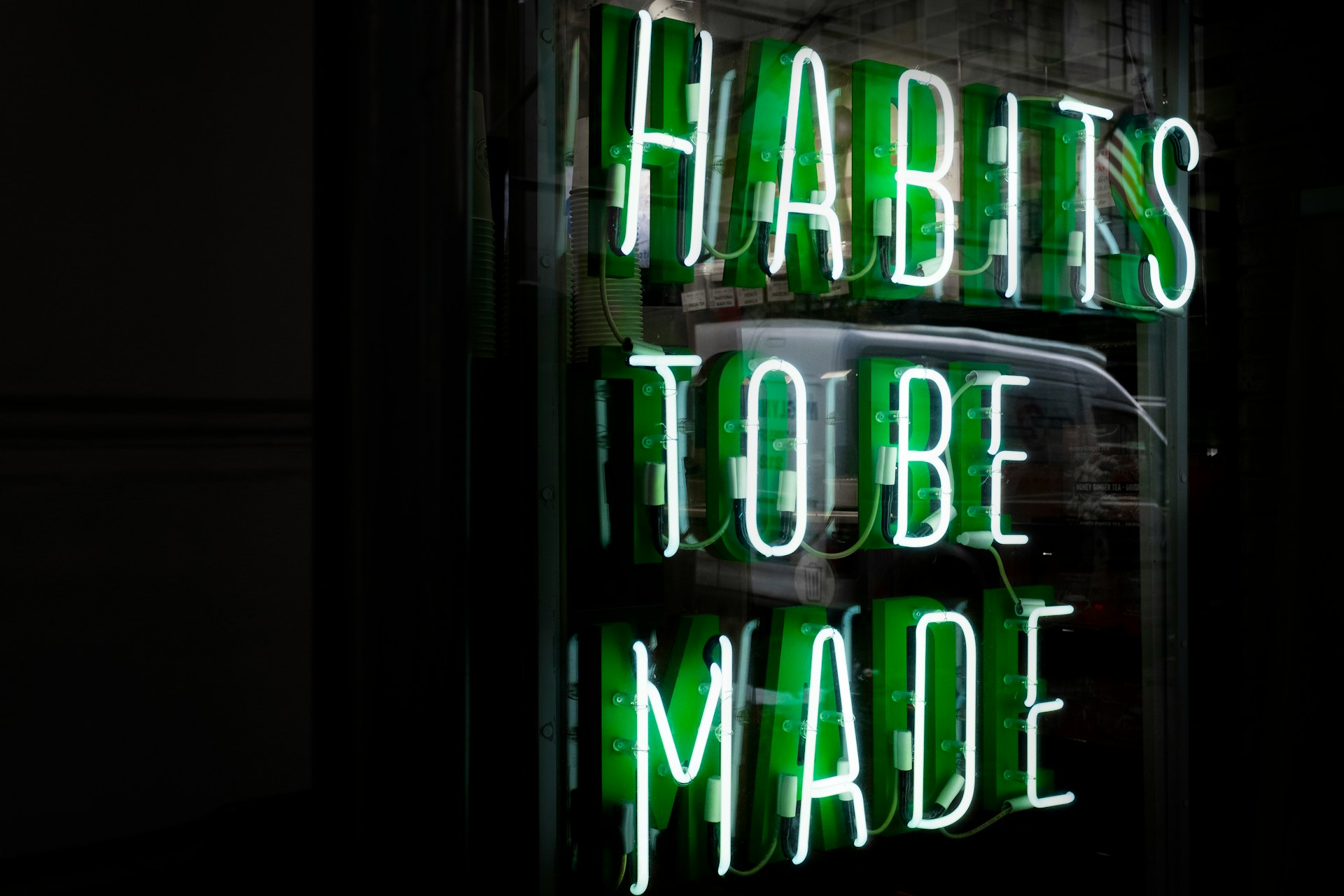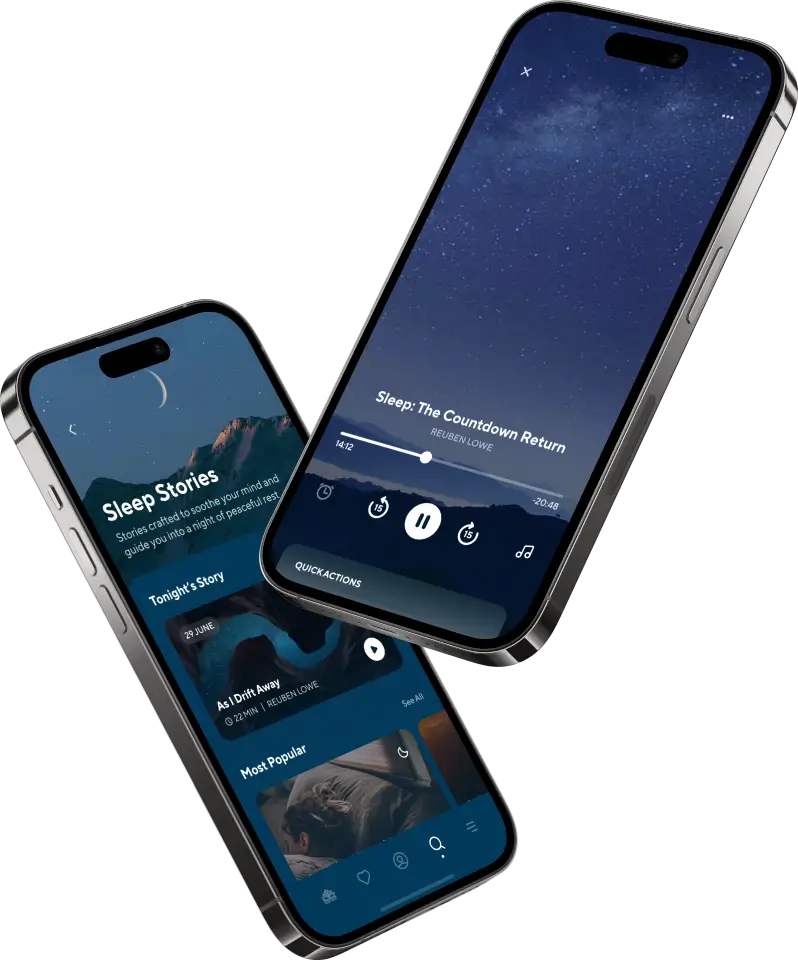Visualization is a practical mental technique that helps you focus better by creating clear mental images of achieving goals. It’s not just daydreaming - this method actively trains your brain to improve attention, manage distractions, and reduce stress. Backed by neuroscience, visualization activates brain areas tied to focus and memory, making it a powerful tool for staying on task in a world full of distractions.
Key points:
- What it is: Visualization involves imagining specific scenarios with sensory details to improve focus and performance.
- How it works: It strengthens brain areas responsible for attention and filters out distractions using the reticular activating system (RAS).
- Techniques: Start with mental imagery, guided sessions, and sensory-focused exercises. Use tools like The Mindfulness App for extra support.
- Benefits: Regular practice enhances focus, reduces stress, and boosts confidence.
Start small - just 5 minutes a day - and build consistency. Visualization doesn’t require perfection, just practice.
How to Learn Skills With Visualization & Mental Training | Dr. Andrew Huberman
Key Visualization Techniques to Improve Focus
Discover methods that help train your brain to lock in on tasks and resist distractions. These techniques go beyond casual daydreaming - they use structured visualization to build and sustain focus.
Mental Imagery for Focus
Mental imagery is the cornerstone of effective visualization. It’s all about creating clear mental pictures of yourself in a focused, productive state. The more detailed these images, the more they enhance your ability to concentrate.
Picture this: You’re sitting at a clean, organized desk. Your breathing is steady, your shoulders are relaxed, and your mind is calm yet alert. You’re fully immersed in your work, free from distractions. This simple exercise can help you mentally prepare for real-world focus.
Take it a step further with progressive focus visualization. Imagine your attention as a beam of light that starts wide, encompassing your entire workspace, and then narrows to highlight one specific task. This practice teaches your brain to transition from broad awareness to pinpoint concentration.
Visualize not only the process of working but also the satisfaction of completing your tasks. Your brain treats these mental rehearsals as if they were real, reinforcing the pathways that support sustained attention. If you prefer more guidance, try structured visualizations to keep your practice on track.
Guided Visualization Practices
While self-directed visualization is powerful, guided sessions can offer a helpful framework, especially if you’re just starting out or struggle to stay consistent. These audio-led practices guide you through visualization exercises, helping you stay engaged and focused.
Many guided visualizations include calming background music or nature sounds to enhance concentration. The narrator’s voice serves as a steady anchor, keeping your mind from wandering and ensuring you stay connected to the process.
For example, The Mindfulness App (https://themindfulnessapp.com) provides a library of over 500 guided sessions tailored to improve focus and attention. Options range from quick 5-minute exercises to longer, more immersive experiences. These sessions blend traditional visualization techniques with mindfulness, helping you develop both immediate focus and lasting concentration skills.
Guided sessions often follow a structured format, starting with relaxation and gradually building toward more complex visualization exercises. This step-by-step approach helps you avoid feeling overwhelmed and builds confidence in your ability to maintain focus.
Building a routine can make visualization a daily habit. Set aside time each day - perhaps in the morning or during a break - to practice a guided session. Consistency is key to turning visualization into a lasting tool for focus.
Using All Your Senses
Incorporating all your senses into your visualization practice makes the experience more vivid and impactful. This multisensory approach strengthens the mental connections that support focus.
Think about the details: visualize the colors and lighting in your workspace, hear the soft hum of background noise or silence, feel the texture of your desk or the smooth keys of your keyboard, and even imagine the motion of your hands as you work. Pair these with the emotions that come with deep focus - calm, satisfaction, and the confidence of completing tasks with full attention.
Auditory cues can play a big role too. For instance, imagining silence can heighten your awareness and deepen your concentration.
The emotional aspect ties it all together. Don’t just picture what focus looks like - feel it. Imagine the pride and accomplishment of finishing a task with your full attention. These positive emotions reinforce your focus and make the experience more rewarding.
To make this practice even more effective, try the layering technique. Start with visual imagery, then gradually add other senses - sound, touch, movement, and emotion - until you’ve created a fully immersive experience. Over time, this approach can significantly improve your ability to focus in real-life situations by strengthening the neural circuits that govern attention.
Benefits of Visualization for Focus
Visualization isn't just about imagining success - it’s a practical tool that can sharpen focus and strengthen mental resilience. By practicing visualization regularly, you can train your brain to process information more effectively and handle daily challenges with greater ease.
Improved Focus and Concentration
When you visualize, you're essentially exercising your brain's ability to sustain attention. Over time, this practice strengthens the neural pathways responsible for focus. The result? You can work for longer stretches without succumbing to mental fatigue and manage complex tasks more efficiently by holding and processing key information with clarity.
Reduced Stress and Anxiety
Visualization is a natural antidote to stress. By mentally stepping into calm, focused scenarios, you can quiet the noise in your mind that often distracts or overwhelms you. This practice creates a mental environment where you feel more at ease, allowing for deeper concentration and a clearer headspace.
Boosted Confidence and Motivation
Picturing success in your mind builds confidence and reduces anxiety about performance. Visualization acts as a mental dress rehearsal, helping you clarify your goals and approach challenges with determination. This boost in self-assurance and motivation can make a noticeable difference in how you tackle obstacles in your daily life.
sbb-itb-bea8dce
Adding Visualization to Daily Life
Incorporating visualization into your daily life can boost your focus and determination. Think of it as a habit, much like brushing your teeth - simple, consistent, and effective.
Creating a Daily Routine
To make visualization a natural part of your day, choose times that align with your daily rhythm. Practicing twice a day for a total of 10 minutes - once in the morning and once before bed - works particularly well. These moments tap into your subconscious, helping you set intentions in the morning and reflect on the day in the evening. Spend just 5 minutes at each session to make it manageable yet impactful.
Set up physical reminders to keep your practice on track. Write your goals or desired outcomes on index cards and read them at the start and end of your day. A vision board is another great tool - place it somewhere you’ll see it often, like your bathroom mirror, computer monitor, or kitchen counter. These visual cues keep your goals front and center, reinforcing your focus every day.
Daily visualization isn't just about imagining success - it’s a mental rehearsal that strengthens your resolve and clarity.
Using Digital Tools for Help
Technology can take your visualization practice to the next level. Apps and digital tools provide guided sessions and visual aids to make your experience more engaging and structured.
For example, The Mindfulness App offers features like guided visualizations, offline access, and reminders to help you stay on track. With over 500 exclusive tracks focused on improving focus and concentration, it’s designed to fit seamlessly into your schedule. Personalized meditation programs make it even easier to stay consistent.
Interestingly, research highlights that using goal-setting apps with visual progress tracking can increase achievement rates by 42%. Digital vision boards on platforms like Canva or Pinterest are another excellent option. They’re easy to update, accessible from anywhere, and keep your goals fresh and motivating.
Built-in reminders in these tools are game-changers for consistency. Instead of relying solely on willpower, you can schedule notifications to nudge you toward your practice at the best times.
Tracking Progress and Staying Consistent
Tracking your visualization practice helps you stay accountable and see the subtle benefits over time. Record details like session length, techniques used, and any changes in your focus, stress levels, or mental clarity. These notes can reveal patterns and progress you might otherwise overlook.
Apps designed for goal-setting can also support regular reviews. A weekly check-in can help you fine-tune your approach. For instance, if you notice morning sessions are more effective than evening ones, you can adjust your routine accordingly.
Start small if you’re unsure about visualization’s impact. Focus on simple, achievable goals and gradually move on to more complex scenarios. This builds confidence in the process and makes it easier to stick with it over time.
Common Challenges and Myths
Even with the best intentions, practicing visualization can sometimes feel like an uphill battle. By understanding the common obstacles and clearing up a few misconceptions, you can build a practice that’s both effective and sustainable.
Building Consistency
One of the hardest parts of visualization is sticking with it long enough to see results. It’s easy to get distracted during sessions or skip a day when life gets hectic. Don’t worry - this is completely normal.
Start small. Try just two minutes a day to ease into the habit. A short session feels manageable, and once you’ve established a routine, you can gradually extend the time. Success builds on itself.
Choose a specific spot for your practice. Whether it’s a corner of your bedroom or a favorite chair, having a dedicated space helps your brain associate that area with focus and calm. Over time, it’ll feel natural to settle into the right mindset there.
If you miss a day, don’t sweat it - just pick up where you left off. Consistency is what matters, not perfection. Even a few minutes here and there can make a difference.
Common Myths About Visualization
Misunderstandings about visualization often discourage people from trying it - or cause them to quit too soon. Let’s clear up some of the most persistent myths.
Myth: Visualization is only for athletes or performers. While it’s true that sports psychology brought visualization into the spotlight, its benefits extend far beyond the playing field. Office workers use it to prepare for presentations, students use it to sharpen focus, and parents use it to manage stress. Visualization is for anyone aiming to improve their focus, reduce anxiety, or achieve personal goals.
Myth: You need perfect mental images. A lot of people think they’re “bad” at visualization because they can’t conjure up vivid, crystal-clear images. But visualization isn’t just about seeing pictures in your mind. Some people are more attuned to feelings or sounds. If visuals aren’t your strong suit, focus on how success would feel or the sounds associated with your ideal scenario.
Myth: Results are instant. While some may notice small improvements early on, meaningful changes take time. Visualization works by rewiring your brain through neuroplasticity, which doesn’t happen overnight. Think of it as a long-term investment in your mental focus and resilience.
Myth: Visualization is just positive thinking. Unlike simple affirmations, visualization involves mentally rehearsing specific scenarios in detail, including potential challenges and how you’d handle them. It’s an active process that trains your brain to navigate real-world situations, not just wishful thinking.
Myth: You need years of experience to see benefits. You don’t have to be a seasoned meditator to get results. Studies show that even beginners can experience reduced anxiety and improved focus within a few weeks of consistent practice. Start where you are, and progress will follow.
Making Your Practice More Effective
Tackling these challenges and myths lays the groundwork for a stronger visualization practice. A few simple tweaks can take your sessions to the next level.
Get specific with your scenarios. Instead of vaguely imagining “being focused,” picture yourself in a real situation - like sitting at your desk, fully engaged in a task, and working without distractions. The more detail, the better. Your brain processes these mental rehearsals as if they’re actual experiences.
Prepare for obstacles. Life isn’t perfect, and your visualizations shouldn’t be either. Imagine how you’d handle distractions, setbacks, or other challenges. This mental preparation builds confidence and helps you stay grounded when faced with real-world difficulties.
Tap into emotions. Visualization becomes much more powerful when you incorporate feelings. Imagine the satisfaction of completing a focused work session or the calm confidence that comes with staying on track. Emotions help strengthen the mental pathways you’re building, making the practice more impactful.
Use tools when needed. Apps like The Mindfulness App can guide you through visualization sessions tailored for focus and concentration. These resources are especially helpful if you’re just starting out or need a little extra structure to stay consistent.
Find the right time. Many people find visualization works best when their minds are naturally quieter - like early in the morning or right before bed. Experiment to see what time fits your schedule and mental state best.
Keep it short and focused. A focused five- to ten-minute session is far more effective than half an hour of distracted practice. Quality always beats quantity.
Visualization is a skill that grows stronger with time and practice. Be patient with yourself, and don’t let myths or temporary setbacks hold you back. With a little dedication, you’ll start to see how this simple habit can sharpen your focus and reduce stress.
Conclusion: Better Focus Through Visualization
Visualization has the power to reshape how you focus, manage stress, and achieve your goals. As we've discussed, your brain responds to mental imagery in ways that mirror real experiences, creating neural pathways that enhance concentration and promote a calmer mindset.
Key Takeaways
At its core, visualization works because your mind often treats vividly imagined scenarios as if they were real. By practicing mental focus through visualization, you train your brain to sustain attention and build resilience.
The techniques we've covered - ranging from simple mental imagery to more immersive, multi-sensory methods - are tools to help you access focused states more easily. Whether it's imagining yourself working distraction-free, visualizing a serene environment, or using guided sessions, you're essentially programming your mind for sharper concentration.
Regular practice can also reduce stress, boost confidence, and increase motivation. You're not just picturing success - you’re creating a mental framework that supports it. Even dedicating just five minutes a day to visualization can make a noticeable difference in your focus and stress levels.
Of course, challenges like inconsistent practice or difficulty forming clear images are normal. Visualization is a skill that improves with time, and even beginners can see progress after just a few weeks of regular effort.
How to Get Started
Now it’s time to put these ideas into action.
- Pick one visualization technique and practice it for five minutes a day for two weeks. Choose a consistent time - perhaps in the morning or before starting a key task - and stick to it.
- Set up a quiet space where you can focus, and track how your stress and concentration improve after each session.
- If practicing alone feels challenging, consider using guided sessions from tools like The Mindfulness App to provide structure and support as you build your skills.
If you miss a session or find your mind wandering, don’t dwell on it - just pick up where you left off. Consistency matters more than perfection.
As you grow more comfortable with the basics, try expanding your practice. Add more detail to your mental images or incorporate other senses to make your visualizations more vivid. The more immersive your practice, the stronger its impact on your focus and daily performance.
Improved focus, reduced stress, and mental clarity are within your grasp. Start today.
FAQs
How does visualization help improve focus and reduce stress based on neuroscience?
Visualization works wonders for sharpening focus and easing stress by tapping into the brain's natural processes. When you picture soothing scenes or vividly imagine achieving a goal, your brain lights up neural pathways tied to sensory and motor functions. This activity helps dial down stress hormones like cortisol, leaving you feeling calmer and more clear-headed.
On top of that, visualization triggers the release of feel-good chemicals like dopamine and endorphins, which naturally lift your mood and encourage relaxation. It also boosts alpha brain wave activity - a state linked to a calm yet alert mind and improved attention span. With consistent practice, visualization can train your brain to handle stress more effectively while staying focused under pressure.
What challenges do people face when starting visualization, and how can they overcome them?
Starting a visualization practice can feel tricky at first. You might struggle with forming clear mental images, staying focused, or even get frustrated when it doesn’t come easily. A good way to ease into it is by starting with simple visualizations - things that are easy to picture, like a favorite object or a peaceful scene. As you get more comfortable, you can gradually work your way up to more detailed and complex imagery. The secret? Consistency. Setting aside a regular time to practice can help you sharpen your focus and build your confidence.
If mental roadblocks like negative thoughts or trouble concentrating pop up, don’t worry - that’s normal. Try using relaxation techniques like deep breathing or mindfulness to quiet your mind before you start. Shifting your mindset to focus on positive thoughts can also make a big difference, helping the process feel smoother and more rewarding. Just keep in mind that visualization is a skill, and like any skill, it gets better with time and patience.
How can I make visualization a consistent and effective part of my daily routine?
To make visualization a consistent and impactful part of your day, pick a specific time to practice - whether it’s first thing in the morning or right before bed - and stick with it. Choose a quiet, comfortable spot where you can focus without interruptions. Take a moment to clearly define your goals, then use detailed mental imagery to engage all your senses. Don’t just picture the outcome; imagine the sounds, textures, and even smells tied to achieving your goal.
Start with just 5–10 minutes a day, keeping it simple at first. As it becomes second nature, you can gradually extend your practice. The key is consistency - practicing at the same time every day helps cement the habit. Over time, this practice can sharpen your focus, boost your motivation, and contribute to a greater sense of well-being.



.jpeg)


